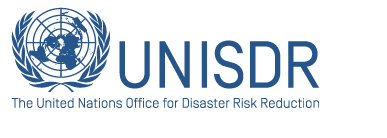-All these measures have involved investments and budget availability, and not all of them are of the same size. Similarly, the campaign is designed in such a way that can be used in municipalities of different sizes and levels of income.
Do you have any recommendation in terms of the budget percentage or proportion that should be allocated to disaster risk reduction?
-I think it would be difficult to establish a fixed percentage or make a recommendation as we usually do, for instance, with the education sector —some 3 percent of the gross domestic product should be allocated to education—. It would be very difficult to calculate this proportion because each city has different levels and types of risks.
Regarding the risks faced by Mexico City, we must increase our draining capacity and that will cost $11 billion. But not all cities have a similar risk or they are smaller, and instead of flooding they face other types of risks. This is why it is difficult to calculate a percentage for all budgets.
I must say the following though: In my opinion, a percentage that you can establish is that at least 60 percent of your response and resilience capacity will depend on the level of social participation and organization, and these two aspects do not cost much.
The remaining 40 percent represents your investment, but again, that 60 percent is how well your society is organized and how well organized you are to prevent an emergency and take action when one arises, as well as to organize and carry out reconstruction efforts after an emergency, if that’s the case. So the question would be how organized are you and the government, and how organized and prepared is your society. This, in my opinion, represents at least the 60 percent
Mr. Marcelo Ebrard, President of the Global Network for Safer Cities and former champion of the UNISDR world campaign “Making cities resilient: My city is getting ready!”, thank you so much for sharing your experience and for having us in a space that is a testament to a green city like yours.
- Thank you for being here. We are very excited about this type of initiatives and the fact that there is an increasing number of cities and countries worldwide that are listening and taking action.
|
-In November 2010 you were acknowledged as a champion of the world campaign “Making cities resilient: My city is getting ready!” because of your leadership and for advancing local actions to promote more resilient nations.
-I would say the one related to organization, the entire organization of the government and the whole system, and this may be seen through the progress made, especially in terms of people´s participation
The number of people that currently participate in the city, one way or another, in this type of activities increased exponentially.
The level of organization and training of public servants also increased quickly.
-Regarding the Ten Essentials that you mention, these would be the two most important outcomes in Mexico City.
|







